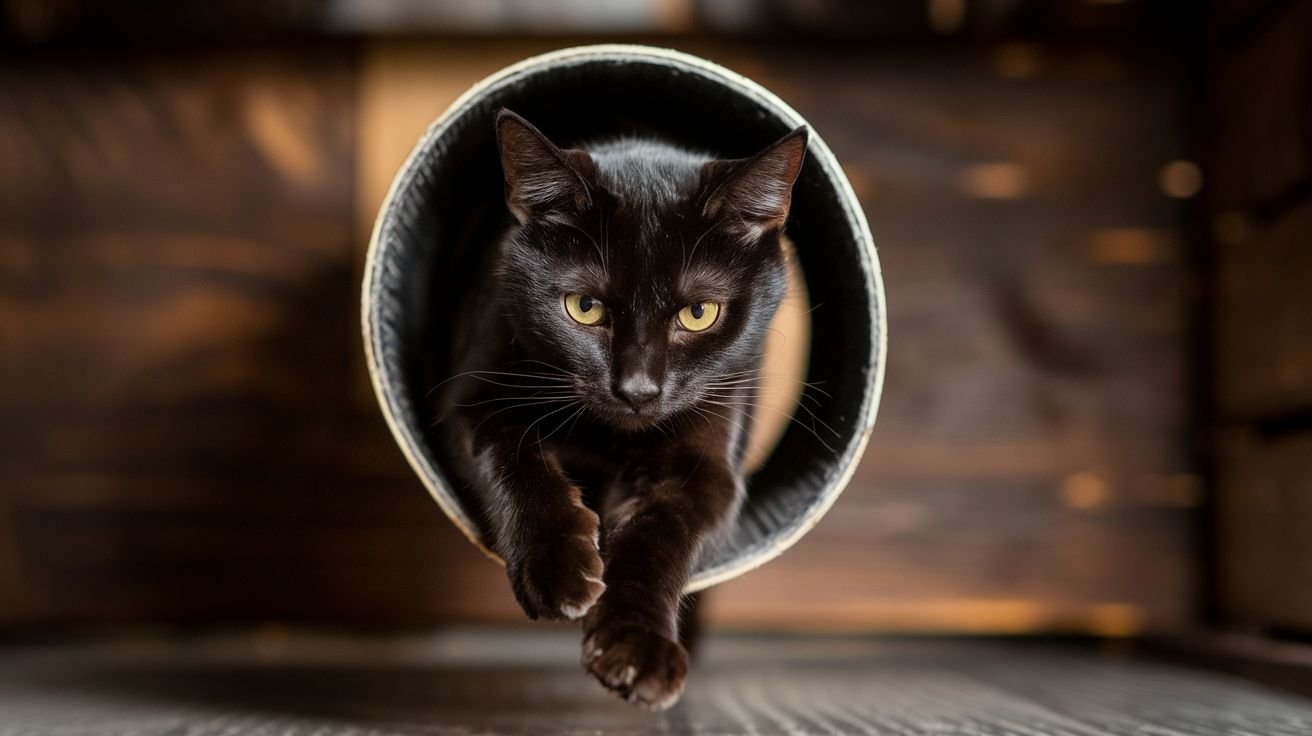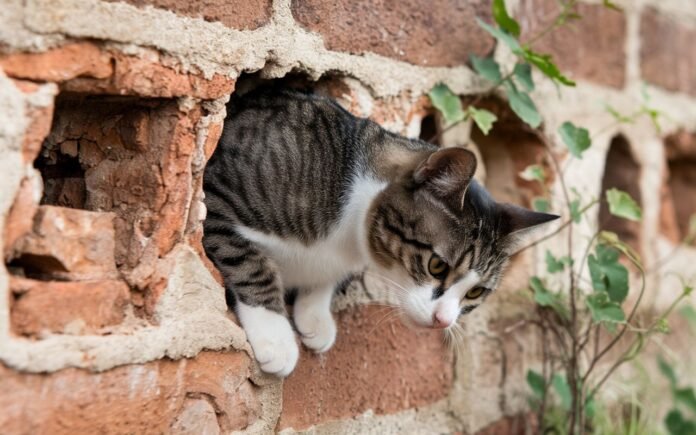Cats have a unique talent. They seem to slip effortlessly into tight spaces and defy our expectations. But what are the keys to this agility?
A significant characteristic of their ability lies in their bone structure. Their flexible shoulder belt gives them an impressive twisting capacity. Unlike humans, this girdle is attached only by muscle, allowing exceptional freedom of movement.
Cats’ collarbones, which are smaller and not rigid, also contribute to their flexibility. According to experts in feline medicine, these anatomical features allow them to reduce their volume and pass through small openings. This adaptation is fruit of a development that favors hunting and flight.
In fact, cats actively seek enclosed spaces, especially in stressful situations. Small hiding places, such as under a bed or in a box, give them security and privacy. This behavior is often associated with stressful circumstances, providing a welcome refuge.
At the same time, their vibrissae (whiskers) play a key role. These sensitive hairs allow felines to accurately assess the size of an opening before entering it. By detecting air movements, they avoid environmental traps and thus limit the risk of accidents.

Recent scientific studies confirm this unique ability. Research from 2024 showed that cats can pass through spaces narrower than their chests. But this research reveals new information: cats have a very precise awareness of their own size. This awareness allows them to make informed decisions when approaching small openings to determine in advance whether or not they are likely to pass.
Cat behavior is actually a combination of instinct, perception and anatomical adaptation. Their ability to squeeze into tight spaces is a great asset in the wild, both for hunting and for protection.
By providing hiding places for our feline companions at home, we contribute to their well-being and reduce their stress. Small spaces then become havens where they can rest in complete peace.
